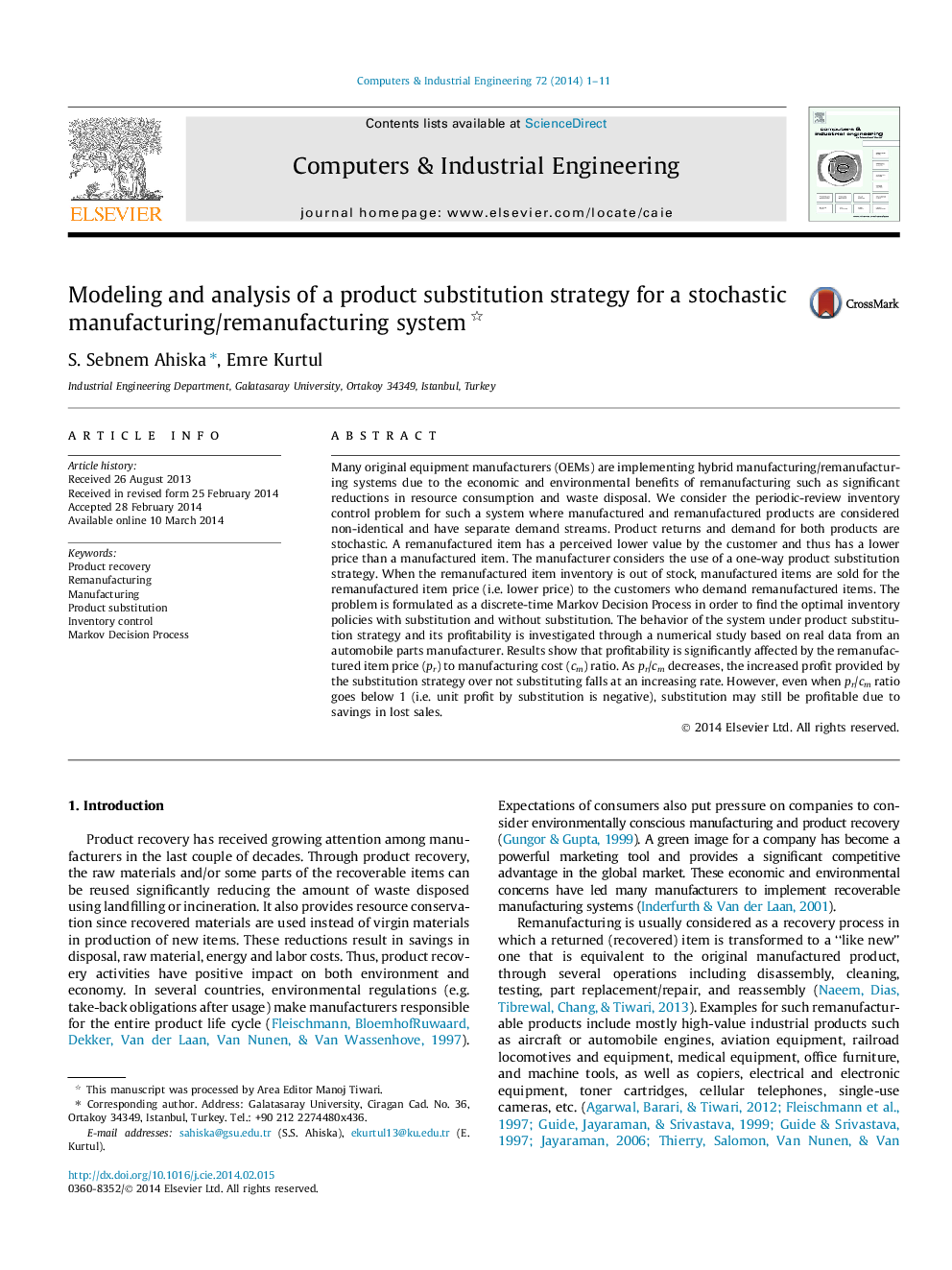| Article ID | Journal | Published Year | Pages | File Type |
|---|---|---|---|---|
| 1134183 | Computers & Industrial Engineering | 2014 | 11 Pages |
•Stochastic hybrid manufacturing/remanufacturing system with substitution is studied.•Production/inventory system is modeled and solved as a Markov Decision Process.•A numerical study is done based on real data from an automobile parts manufacturer.•The profit and behavior of the system are analyzed through numerical experiments.•Results are encouraging for the manufacturer to use a product substitution strategy.
Many original equipment manufacturers (OEMs) are implementing hybrid manufacturing/remanufacturing systems due to the economic and environmental benefits of remanufacturing such as significant reductions in resource consumption and waste disposal. We consider the periodic-review inventory control problem for such a system where manufactured and remanufactured products are considered non-identical and have separate demand streams. Product returns and demand for both products are stochastic. A remanufactured item has a perceived lower value by the customer and thus has a lower price than a manufactured item. The manufacturer considers the use of a one-way product substitution strategy. When the remanufactured item inventory is out of stock, manufactured items are sold for the remanufactured item price (i.e. lower price) to the customers who demand remanufactured items. The problem is formulated as a discrete-time Markov Decision Process in order to find the optimal inventory policies with substitution and without substitution. The behavior of the system under product substitution strategy and its profitability is investigated through a numerical study based on real data from an automobile parts manufacturer. Results show that profitability is significantly affected by the remanufactured item price (pr) to manufacturing cost (cm) ratio. As pr/cm decreases, the increased profit provided by the substitution strategy over not substituting falls at an increasing rate. However, even when pr/cm ratio goes below 1 (i.e. unit profit by substitution is negative), substitution may still be profitable due to savings in lost sales.
